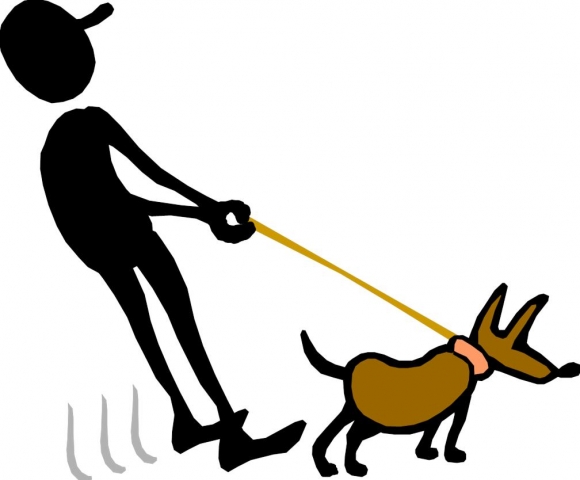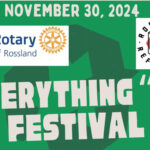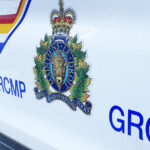Easy as 1-2-3: Downtown doggy leniancy comes with animal control crackdown
Rossland’s new animal control bylaw blitzed through first, second, and third reading on Monday evening.
Neither the press nor the mayor were present for the committee-of-the-whole meeting (COW) in which the new version of the animal bylaw was discussed—these meetings are open and advertised to the public—but the major change is new permission for dogs to be walked on a leash downtown where dogs were previously excluded by law, if not in fact.
Opening the debate, the mayor noted, “There’s been a whole bunch of discussion already,” to which Coun. Jody Blomme added, “It’s unfortunate we didn’t have anyone watching it.”
Blomme said her main position was to ask, “Why have a strict bylaw when a lenient one might work better?”
Coun. Kathy Wallace said, “The last one wasn’t working.” Wallace felt the new approach was “common-sensical” and “very clear” on what is and is not acceptable. She called it the “middle of the road,” balancing a “privilege to responsible dog owners while setting out a deterrent to irresponsible ones.”
Mayor Greg Granstrom noted that he was not at the COW and said he felt bound to “accept the recommendations.”
“If it turns out to be a boo-boo, we can always un-booboo it,” he said. “If it doesn’t work, I’ll be the first one to jump up and down and have it rescinded.”
Coun. Kathy Moore and Coun. Jill Spearn both expressed some reservations with the “1-2-3” approach to the bylaw, passing first, second, and third reading all in one evening. Moore pointed to an “interesting article” by André Carrel in the Rossland Telegraph where he laid out the democratic purpose of three readings.
First reading of a bylaw is a formality, Carrel wrote, to introduce the bylaw to council. Second reading should consider “the principle of a measure” relative to “other methods of reaching its proposed objective.” Finally, third reading is a review of the bylaw’s final form.
Moore told council, “Having one, two, three readings all in one night makes me uncomfortable,” she said, except in this particular case she was satisfied with the bylaw and felt council had already had a “productive COW discussion.”
“No-one’s trying to railroad anything,” Granstrom said, saying that “if any councillor feels uncomfortable,” they are welcome to vote down the motion and present a different one.
Spearn said, “I was going to comment on 1-2-3 readings in the same evening as well. It makes me a little uncomfortable, especially when not everyone is at council,” she said, referring to the absence of Coun. Tim Thatcher and Coun. Cary Fisher.
Spearn continued, “I’m still not comfortable with dogs downtown because we’ve revitalized the downtown core. We have beautiful trees, we will have shrubs, and it has been an enormous amount of taxpayer money.”
She said she had just seen three dogs tied up to one of the downtown trees. “It irks me,” she said, “after we spend all this money. They don’t have common sense.” Spearn said walking a dog should not be combined with doing chores downtown, especially when there are “so many kilometres of trails outside the backdoor.”
“I’m going to vote against this bylaw for all the people who are uncomfortable with dogs,” Spearn said.
Moore concluded, “We have to do our due diligence, we have to seriously issue tickets to get the lesson learned. It’s worth a try, and if it doesn’t work, we’ll line up behind the mayor to get it rescinded.”
Council voted 4-1 in favour of the new bylaw, with Spearn opposed.
What’s new in the Animal Control Bylaw
The new bylaw includes a provision that allows leashed dogs to be in the “downtown core” so long as they are under the “immediate charge and control of a responsible and competent person.”
In the previous bylaw—which will remain in effect until council approves the new bylaw at the March 25 meeting—the downtown core was in the list of dog exclusion zones. The only legal crossings for leashed dogs were at Queen and Columbia, and alley-to-alley across Washington between First and Columbia.
A bylaw officer or pound keeper may still seize a dog in the downtown core if it is unattended. If it’s tied up, the offence carries a $50 fine, and if it’s “at large,” the fine is $100. Both these fines can have other fines attached, as described below.
The Dog Exclusion Zone and fines for being ‘at large’
As before, all School District No. 20 properties, including MacLean and RSS, and most city parks—Nickleplate, Jubilee, Centennial, Cook Ave., Museum, Pioneer, and the Wading Pool Park—are in the “Dog Exclusion Zone,” for which there is a $250 fine for the presence of a dog.
If the dog is unattended, the city can levy an additional $100 “at large” fine. If the dog is seen taking a dump and you weren’t there to pick it up, that’s another $100.
Calamity of calamities, if the dog is female and in heat, you’re in for another $250.
If the dog is unlicensed, another $100 is added, and worse, even if it’s a first offence the dog goes straight to SPCA jail in Trail, the city’s contracted “pound keeper.” That’s another $50 (plus plus, for repeat offenders) and a $35 kennel cleanup fee. If the dog stays overnight, it costs more.
So, hypothetically at least, your wandering, in-heat, unlicensed pooch could be pooping in a bush in Pioneer Park when a bylaw officer suddenly whisks her off to the pound where you would have to post bail to the tune of $885.
City staff said fines of $50 and up are sent to a collections agency if they are not paid on time.

























